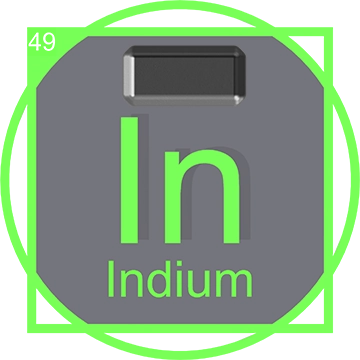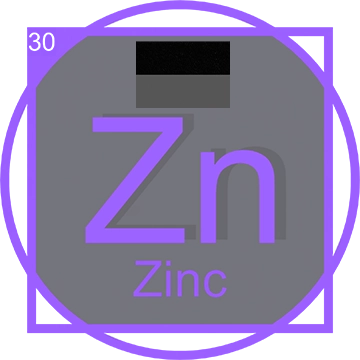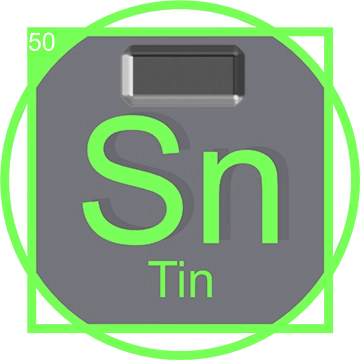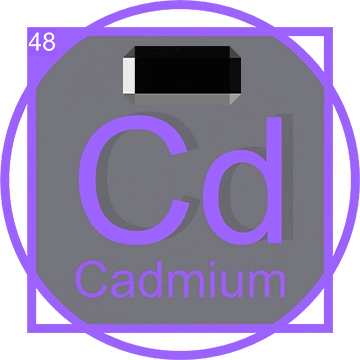Indium: Bridging Technology and Innovation
Discovery of Indium
Indium, element 49 on the periodic table, was discovered in 1863 by the German chemists Ferdinand Reich and Hieronymous Theodor Richter. Their discovery was incidental; while they were investigating the presence of thallium in zinc mineral ores, they instead stumbled upon a new element. Employing spectroscopic methods, a cutting-edge technique at the time, they observed a brilliant indigo blue line in the spectrum of the sample.

This distinctive spectral line, which was unlike any known element, was the first indication of indium's existence. Captivated by the vivid indigo color, Reich and Richter named the element after the Latin word 'indicum', reflecting the striking shade that marked its spectral identity.
This method of using spectral analysis to identify elements was relatively new, making their discovery of Indium a significant contribution to the field of chemistry and material science. Indium's identification highlighted the power of spectroscopy in discovering new elements and opened the door for further advancements in scientific exploration and understanding of the periodic table.
Physical and Chemical Properties of Indium and it's purest form

Indium, in its purest form, is a soft, silvery-white metal that exhibits a bright luster. This post-transition metal is notably ductile and malleable, properties that, along with its relatively low melting point of 156.60°C, make it particularly useful in the manufacturing of low-melting alloys and solders. These physical characteristics allow Indium to be easily formed and used in a wide range of industrial applications.
Chemically, Indium is not very reactive at room temperature, maintaining stability in air and water. However, when heated above its melting point, it can oxidize, forming an oxide layer. This mild reactivity is also evident in its ability to form alloys with many other metals, enhancing their mechanical and thermal properties.
Applications of Indium in Technology

Indium's unique properties make it invaluable in various technological applications. It is extensively used in the production of Indium tin oxide (ITO), which is applied to touch screens, flat panel devices, and thin-film photovoltaics due to its excellent electrical conductivity and transparency. Indium is also used in the manufacture of semiconductors, as a solder in the electronics industry, and in LED technology for its ability to bond to glass and metals.
Moreover, indium's thermal properties are exploited in thermal interface materials (TIMs) used in heat sinks for computer processors and high-performance electronics. Its role in these technologies underscores its critical importance in modern computing and telecommunications infrastructure.
The Role of Indium in Sustainable Technology

As the demand for renewable energy solutions increases, indium's role in photovoltaic technology, particularly in copper indium gallium selenide (CIGS) solar cells, has become more significant. These solar cells offer a promising pathway to efficient and cost-effective solar energy conversion, contributing to sustainable energy advancements.
Future Prospects of Indium
The future of indium is intertwined with advancements in technology and sustainability. With ongoing research into its potential applications, indium could play a key role in the development of next-generation electronics and renewable energy technologies. Its growing importance in environmental technologies also offers the potential for indium recycling to become more prevalent, ensuring the sustainable use of this valuable resource.
How Indium is Sourced
Indium is primarily produced as a byproduct of zinc ore processing, but it is also found in iron, lead, and copper ores. The largest producers of indium include China, South Korea, and Canada, where it is extracted from sulfidic base metal ores. In these mining operations, indium is often found alongside elements such as zinc, tin, and cadmium. The extraction process involves crushing and grinding the ore, followed by froth flotation to separate the metal. The indium is then purified through electrolysis or leaching, producing a high-purity metal for industrial use.
Modern Uses of Indium
Today, indium is indispensable in a variety of technological applications. It is widely used in the manufacture of indium tin oxide (ITO), which is applied to touch screens, flat panel devices, and thin-film photovoltaics due to its excellent electrical conductivity and transparency. Indium is also critical in the production of low-melting-point alloys and as a thermal interface material in electronics to improve heat transfer. Additionally, indium compounds are used in LEDs, laser diodes, and as a radiation source in nuclear medicine.
Future Prospects of Indium

The future of indium is closely tied to advancements in technology, particularly in renewable energy and electronics. Researchers are exploring the use of indium in next-generation thin-film solar panels, which could dramatically increase the efficiency and reduce the cost of solar power. Moreover, indium's potential applications in quantum dots and flexible electronics are opening new avenues for innovations in displays and wearable technology. The ongoing development in recycling technologies for indium is also critical, ensuring a sustainable supply of this valuable resource.













